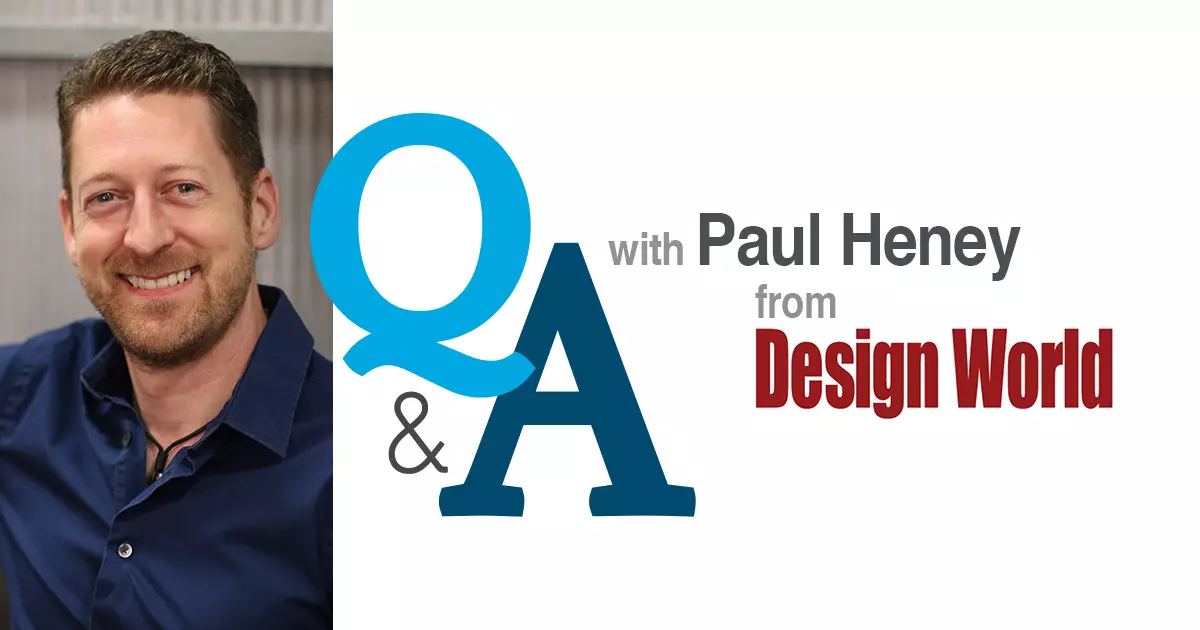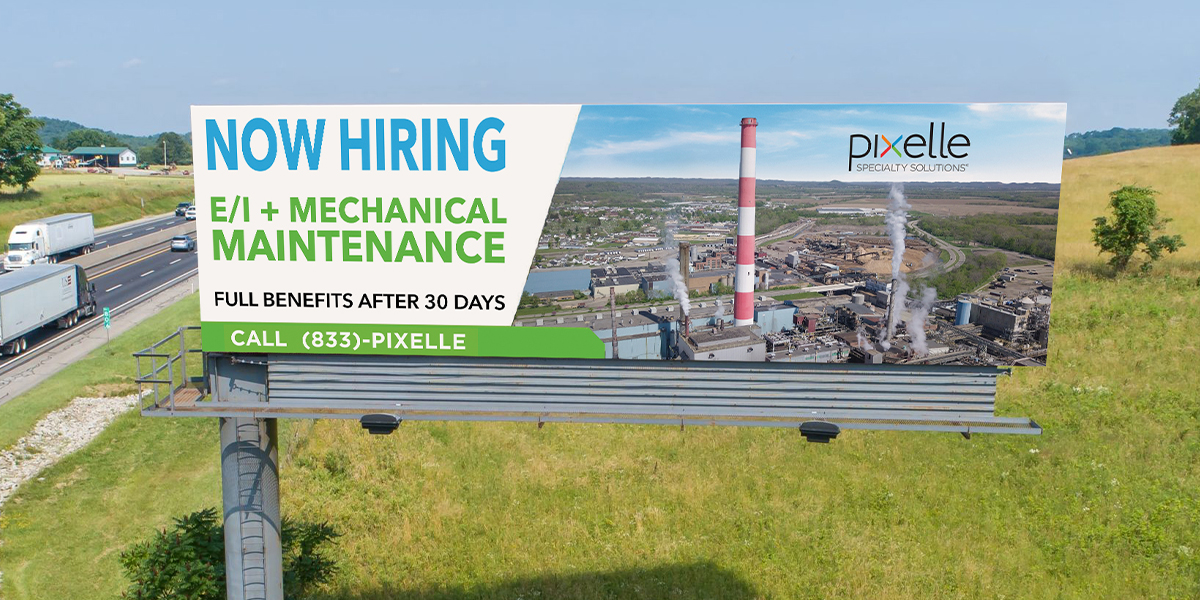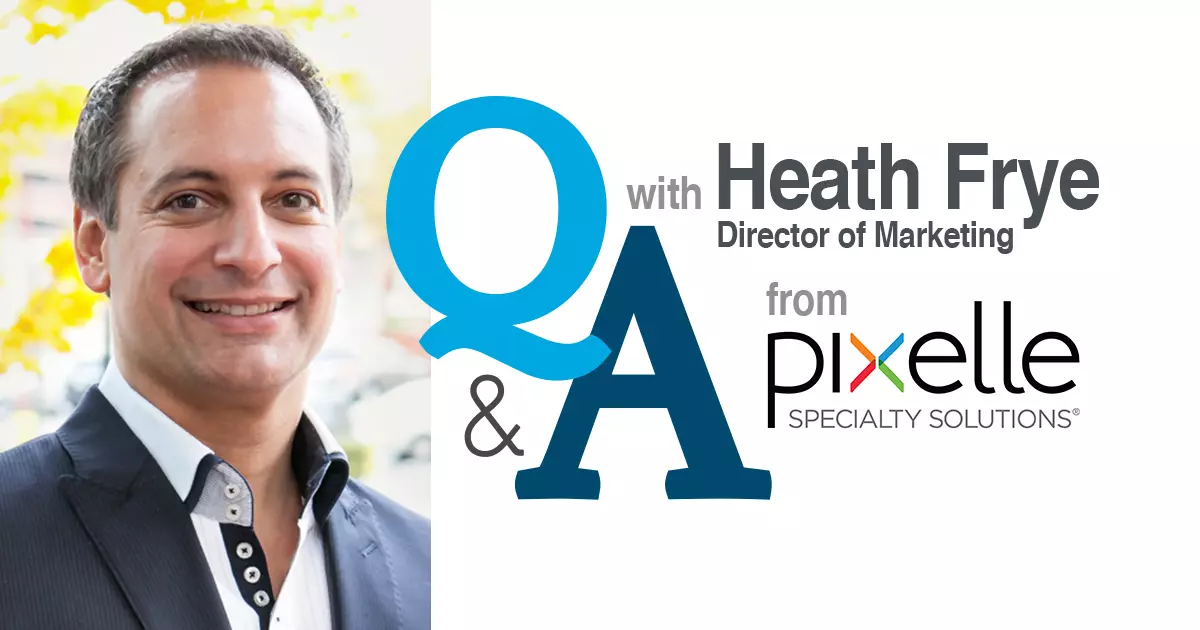Industry Insight: Q&A With Design World — Automation, Marketing to Engineers and More

Paul Heney, VP and editorial director of Design World, shares his industry insights on manufacturing trends, reaching engineers through social media and the power of diversity.
Stay on top of the latest trends impacting manufacturers in this edition of our expert Q&A series. From automation to social media platform Clubhouse, Paul Heney, vice president and editorial director from Design World, shared his thoughts on a range of topics. Here’s what Paul had to say:
1. How has COVID-19 impacted recent industry trends like, for example, digital transformation? And what is the top manufacturing industry trend you think can’t be ignored over the next year and why?
COVID’s certainly forced all of us to better figure out how to work while separated, whether that means across town or on opposite sides of the manufacturing floor. I hear a lot about how machinery manufacturers are being asked for increased levels of automation from their customers. That could mean something like increasingly automated lab processes. Our readers are the ones that are having to figure out how to best control those processes via some type of motion control.
The greatest trend I’m seeing is a convergence of things we’ve been hearing about for years, or even decades. The ability to monitor critical applications and parts, and provide for predictive maintenance, is more real today than it’s ever been. The improvement in sensors — not to mention how inexpensive they’ve become — along with robust networks improving the IoT and increased wireless connectivity have really fueled this area. And in some manufacturing facilities, where an hour of unplanned downtime can mean millions of dollars, that’s truly a game changer.
2. Two-part question:
a. What do you view as the greatest challenge for manufacturing?
The largest challenge may be finding a sweet spot for how and where to manufacture. We’ve swung from building things here to offshoring to reshoring, and now many companies are trending to this “local for local” sort of thing. With this idea, instead of having one manufacturing facility in China, a company would have 4-6 smaller ones in different regions of the world, maybe Wisconsin, Brazil, South Korea, the Czech Republic and India. This approach seems to make more sense to me, but it wouldn’t surprise me if the pendulum swung back in another decade or two. We’ve got to figure out what the best long-term solution is for medium-sized manufacturers.
b. What do you view as the greatest opportunity? (What excites you most about the future of manufacturing?)
I think there’s so much opportunity with the combination of additive and subtractive manufacturing. Take a look at what a company like Mazak is doing. They’re a traditional machine tool manufacturer, and one might think that a company like that would be afraid of the competition that 3D printing/additive technologies provide. But they’re embracing it and figuring out how best to put additive and subtractive technologies on a single machine. Together, these manufacturing techniques are going to do things that neither one could do alone and make parts for — say, rocket engines — that were unimaginable a generation or two ago.
3. When it comes to suppliers’ content/channel preferences and expectations, have you seen any trends over the past year? Is there a new norm when reaching engineers, or is it business as usual?
I think engineers have been really open to many of the new platforms we’ve been using, including new webinar series, podcasts, more videos and virtual events. There is a bit of creeping Zoom fatigue, though, and I think everyone is looking forward to getting back together and going to conferences and seminars. Hopefully, we can keep up this more multi-faceted approach to delivering great content, and if we do, I’m confident that the engineers will keep showing up.
4. We enjoyed your article “The new social media is more than just noise,” where you shared your recent experiences with Clubhouse. Can you expand more on social media and using it to reach — and, even more so, connect with and listen to — engineers? What platforms have you found the most helpful and why?
One of the things I love about my company, WTWH Media, is how it’s always embraced social media. We’re encouraged to try out them all and see if any given one helps us connect with our audience. Obviously, there doesn’t seem like there’s nearly as much traction on things like Pinterest and Instagram for engineers. But we’ve had good success with Twitter and LinkedIn, and to an extent Facebook. I find that LinkedIn is ideal for things like finding speakers, judges or expert commentators, while Twitter is a great way to promote the unique content that our editors are creating.
Clubhouse is an interesting beast; I compare it to a cross between talk radio and an ongoing TED Talk. Our editorial team has tried hosting a couple of rooms in conjunction with a Women in STEM group on Clubhouse, and we had some incredibly insightful conversations with women whom we likely wouldn’t have connected with on another platform. It also gave us some neat ideas for future stories, something that I didn’t expect going into it. And that’s a great lesson there: keep an open mind when using these social media tools, as they may help you in ways that will surprise you.
5. Your article “Social change and the engineering world” states: “Corporate success stories prove that more diverse companies build better products, answer customer needs more effectively and make us all better people in the long run.” What companies stand out as those “success stories” that you mentioned? What have you heard from engineers regarding diversity’s impact?
I’m going to take this in a little different direction. In 2019, our company acquired the assets of R&D magazine (now rebranded as R&D World), truly one of the stand-out B2B publications over the last 60+ years. I was given the helm of the publication (in addition to my Design World duties), and it’s opened a whole other world of great scientists and engineers doing meaningful work to me.
In the months before COVID hit, I had started on a tour of some of the country’s leading DOE research laboratories. Meeting so many of these multi-award-winning teams — people who are literally maintaining our nuclear arsenal, keeping us safe from cyberthreats and the like — it was so refreshing to see the diversity on all of them. Not just based on gender or race, but on education and background and ability and so many other things.
And if you’ll allow me to make a pitch here, I’d humbly suggest reading two books on diversity/other outlooks that have really changed my perspective in the last few years. First is “Between the World and Me” by Ta-Nehisi Coates and the second is “Invisible Women — Data Bias in a World Designed for Men” by Caroline Criado Perez. Both truly opened my eyes on things and perspectives that were never taught to me in school.
6. We would love to learn something about you that we wouldn’t read in your bio — is there anything you are really proud of or anything unique you could share?
I’m an aspiring novelist. I wrote my first two novels (in the suspense/horror genre) back in college — and have been slowly working on a more mainstream fictional novel during COVID. I’ve always enjoyed developing meaningful characters that a reader can connect with, and this latest book is really challenging me to do more of this heavy lifting. One of these days, maybe I’ll get one of them published!
Thank you, Paul, for sharing your expertise!
To read more about trends in manufacturing, check out 5 Industrial Manufacturing Trends Impacting Your Operations from our Director of Strategy, Alison Fetterman.
Sign Up for our Newsletter - Get agency updates, industry trends and valuable resources delivered directly to you.
Paul Heney - VP and Editorial Director, Design World
Paul J. Heney has a BS in Engineering Science & Mechanics with minors in Technical Communications and Biomedical Engineering from Georgia Tech. He has written about fluid power, aerospace, robotics, medical, green engineering and general manufacturing topics for more than 25 years. He has won numerous regional and national awards for his writing from the American Society of Business Publication Editors.




